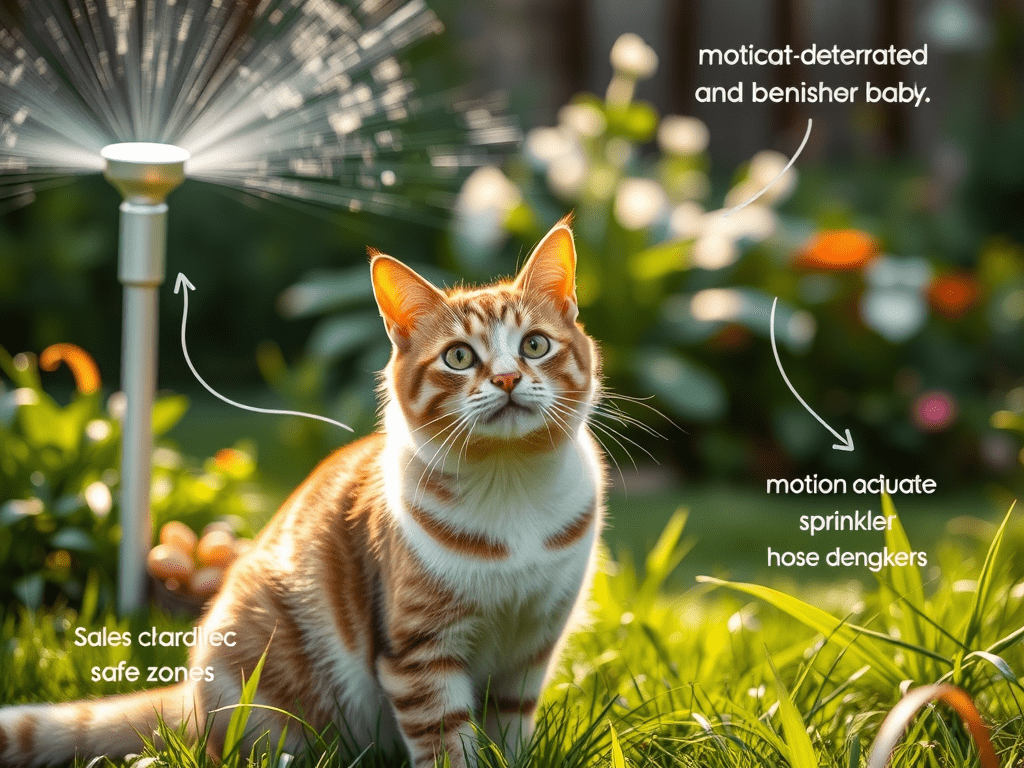Proven Techniques to Manage Your Cat's Innate Hunting Instincts
Mitigating the Hunting Behavior of Your Cat: The instinctual drive to hunt is a fundamental aspect of a cat’s nature, deeply rooted in their evolutionary history. While this behavior is entirely normal, it is essential to cultivate a safe indoor environment that accommodates their natural instincts while simultaneously protecting local wildlife. By creating stimulating spaces and engaging activities that appeal to their senses, you can keep your feline friend both mentally and physically engaged. This way, they can remain happy and fulfilled without threatening the safety of outdoor animals, ensuring a harmonious balance between their instincts and the ecosystem.
Incorporating interactive toys into your cat's routine is an excellent strategy for enriching their indoor hunting experience. Options such as feather wands, laser pointers, and battery-operated mice can captivate your pet’s attention for long periods. These toys mimic real hunting situations, enabling your cat to engage in stalking, chasing, and pouncing—essential activities that provide both mental stimulation and physical exercise. Not only do these toys entertain your feline, but they also contribute positively to their overall health by allowing them to expend energy in a constructive manner.
Transform your living area into an exciting feline playground by designing obstacle courses that include a variety of structures like boxes, tunnels, and shelves. This mini-jungle gym encourages exploration and physical activity, motivating your cat to climb, jump, and explore diverse environments. Given their natural curiosity, providing varied play zones enables them to feel as though they are embarking on an adventurous safari right within the comfort of your home, enriching their playtime and overall quality of life.
Never overlook the benefits of puzzle feeders, as these ingenious feeding devices challenge your cat mentally while simulating the effort they would typically invest in hunting. By incorporating treat-dispensing puzzles into your cat's daily routine, you engage their minds while providing a fun and rewarding experience. This method not only entertains your pet but also promotes healthier eating habits as they learn to ‘work' for their treats. As a result, mealtime becomes more engaging, catering to both their physical and mental needs.
Establishing a routine that prioritizes playtime is crucial for your feline's well-being. Engaging in interactive play fosters a stronger bond between you and your cat. Schedule regular play sessions using the same toys that they enjoy during independent playtime. This shared experience alleviates any built-up frustration your cat may experience, while also enhancing your emotional connection, making playtime an enriching and rewarding experience for both you and your furry companion.
With some imagination and commitment, you can create a vibrant indoor environment for your cat. Your home can transform from a mere shelter into a thrilling landscape that satisfies their natural hunting instincts while ensuring their safety from outdoor dangers. By thoughtfully planning and considering your cat's needs, you can nurture a content and well-adjusted indoor cat.

Leash Training: Your Cat's Pathway to Safe Outdoor Exploration
Implementing leash training can open up a world of safe outdoor adventures for your cat. Although walks are typically associated with dogs, cats, too, can thrive in the great outdoors with proper training and a bit of patience. By introducing your feline to a harness and leash, you can offer them the chance to explore nature while ensuring they remain secure and supervised throughout their journey.
Begin your leash training process with a comfortable, well-fitting harness that your cat can wear easily. Allow your pet to explore and investigate the harness before attempting to put it on them. This gradual introduction helps alleviate any anxiety and fosters a positive association with the harness. Letting them take the lead in this process can make the overall experience much more enjoyable and stress-free for both of you.
Once your cat feels at ease with the harness, attach a lightweight leash and practice walking around your home. This familiar setting will help your feline adjust to the sensation of wearing a leash, boosting their confidence along the way. Be patient and prepared for some initial resistance; allowing your cat to adapt at their own pace is essential to ensure a smooth transition to outdoor adventures.
When venturing outside for the first time, choose a calm and secure area, such as your backyard or a quiet park. Ensure the location has minimal traffic and distractions to help your cat feel safe. Start with short outdoor sessions to avoid overwhelming your pet, gradually extending the duration as they become more accustomed to their new surroundings.
Supervised outdoor experiences greatly enrich your cat's life. They can enjoy the sights, sounds, and smells of nature while also protecting local wildlife. Imagine the joy radiating from your cat as they encounter new experiences in a secure environment. This time spent together not only enhances their quality of life but also strengthens the bond between you and your feline friend.
Stories from other cat owners can provide inspiration. Many have shared their initial hesitations about whether their cats would adapt to leash walking, yet they discovered that consistency and positive reinforcement were key. Celebrate every small achievement as a step toward broadening your cat's horizons while ensuring their safety.
By adding leash training to your cat's routine, you are facilitating a blend of outdoor enjoyment and wildlife conservation. This balanced approach allows your cat to explore their surroundings while fostering a sense of safety in their environment.
Creating Secure Outdoor Environments: The Benefits of Catios
Outdoor cat enclosures, often referred to as catios, provide the perfect solution for adventurous felines seeking outdoor experiences without the associated risks. These secure spaces allow your cat to enjoy the outdoors while ensuring their safety and the well-being of local wildlife.
Building or purchasing a catio can be tailored to fit your specific space and budget. Options range from simple balcony enclosures to elaborate backyard structures. The utmost priority should be on ensuring the enclosure is escape-proof, as safety is paramount in providing a secure environment for your cat.
When designing your catio, consider adding multiple levels and cozy hiding spots. Cats flourish in environments that offer vertical climbing options and places to retreat. By incorporating platforms, ramps, and hammocks, you can transform a basic structure into an exciting paradise that closely mirrors their natural habitat.
Enhancing the sensory experience within the catio is equally beneficial. Introduce elements like cat grass, scratching posts, or logs to create a stimulating environment rich in diverse textures and scents. This sensory enrichment keeps your cat engaged and happy while allowing them to enjoy the outdoors in a controlled setting.
Regular maintenance is essential for ensuring the safety and functionality of your catio. Consistently inspect for wear and tear, including the integrity of the mesh, the structure, and any locks. Cats are naturally curious and may test the limits of their enclosure, so keeping it well-maintained is vital for their overall well-being.
With a catio, your feline companion can bask in the sun, climb, and observe wildlife without posing a threat to local ecosystems. They can enjoy the outdoors safely, experiencing the joy of watching birds and other small creatures from their secure haven.

Effective Training Methods to Minimize Your Cat's Hunting Instincts
Training your cat to reduce their hunting behaviors may appear challenging, but with the right techniques, it can be effectively managed. The first step is to comprehend the natural instincts and behaviors that drive your cat to hunt, as this understanding is crucial for implementing effective training strategies.
Utilizing innovative technology can significantly bolster your training efforts. Consider employing motion-activated deterrents, such as sprinklers or noise-makers, to set boundaries that discourage hunting without disrupting other activities. Strategically zoning your yard into safe areas can help divert your cat’s focus away from potential prey, making training more effective.
Positive reinforcement is a critical element in modifying your cat’s behavior. Reward them for exhibiting behaviors that don’t involve hunting with treats or affection. For instance, if your cat responds to your call or refrains from chasing after a potential target, reward them with a delicious treat or extra attention. This approach encourages them to repeat desirable behaviors while diminishing their instinctive urge to hunt.
Incorporating clicker training can also serve as an effective technique. This method involves associating a distinctive sound with positive actions, enabling your cat to connect their behavior with rewards. By clicking when they display desirable actions, you reinforce good habits and clarify your expectations, making training more straightforward.
If you seek more personalized guidance, consider consulting with feline behavior specialists. They can provide tailored advice and insights that address specific challenges, assisting you and your cat in living harmoniously while respecting local wildlife.
The aim of utilizing deterrents and training is not punitive but rather to guide your cat toward behaviors that prioritize their safety and the environment. With consistency and patience, you can successfully redirect their instincts, leading to safer outdoor interactions for both your cat and local wildlife.
Nutritional Approaches to Help Reduce Hunting Drives in Cats
The type of food you provide and the feeding methods you adopt can significantly influence your cat's hunting instincts. Interestingly, even a well-fed cat may still exhibit hunting behaviors; however, how you feed them can help mitigate this drive effectively.
Free feeding, where food is accessible at all times, may not be the most suitable approach for every cat. Instead, consider implementing a structured feeding schedule. By establishing consistent mealtimes, your cat may be less inclined to hunt, as they learn to associate food with specific times of the day, thus diminishing the need to seek out prey.
Interactive feeding strategies can be groundbreaking in transforming your cat's behavior. Utilizing food puzzles or dispensers can simulate the act of hunting, requiring your cat to ‘work’ for their meals. This not only keeps them mentally stimulated but channels their energy positively, allowing their natural instincts to be expressed safely and effectively.
Be mindful of the nutritional content of their diet as well. A high-protein, low-carbohydrate diet aligns better with a cat's natural dietary requirements, potentially resulting in a decrease in hunting behaviors. Collaborating with a veterinarian to customize the diet can ensure that your cat's nutritional needs are adequately met while reducing their hunting urges.
Lastly, offering a variety of food types can satisfy their inherent curiosity and appetite for novelty. Switching between dry kibble, wet food, and raw diets can keep mealtime exciting, lowering the urge to seek thrills outside their food bowl.
Feeding strategies extend beyond merely providing sustenance; they serve as a powerful tool for managing your cat's behavior. By adjusting how and what you feed them, you can effectively minimize their inclination to hunt while keeping them satisfied and healthy.

Cultivating Community Awareness for Cat Conservation Efforts
Cats are cherished companions, and as their guardians, we bear the responsibility of ensuring they coexist peacefully with local wildlife. By participating in community initiatives and fostering personal accountability, we can significantly lessen the ecological impact of free-roaming cats.
Engaging with local conservation organizations is an excellent way to stay informed about wildlife-friendly practices. Numerous communities offer educational workshops for cat owners, addressing the ecological consequences of allowing cats to roam freely and presenting solutions to mitigate these impacts.
Consider initiating or joining neighborhood discussions or social media groups focused on responsible pet ownership. Sharing resources, tips, and personal experiences can foster a more wildlife-conscious community, creating a supportive network for all pet owners and wildlife enthusiasts.
A proactive approach includes establishing cat-friendly zones within communal gardens or parks. These designated areas can feature enclosures or supervised play spaces, ensuring a safe environment for both cats and wildlife. This collaborative effort enhances awareness and promotes positive interactions between pets and local nature.
Incorporating family-friendly initiatives, such as sticker campaigns or educational contests for children and teens, can help raise awareness about responsible pet ownership and the importance of coexisting peacefully with nature.
Lead by example at home by implementing the strategies you’ve learned. Whether it’s leash training, creating catios, or modifying feeding practices, demonstrating a commitment to a harmonious relationship between your cat and the environment can inspire others to follow suit.
By combining individual actions with community initiatives, we can create a supportive network that balances our cats’ needs with ecological responsibility. Together, we can cherish our pets while respecting and protecting the natural spaces around us.
The Article: Minimize Your Cat’s Hunting Impact Appeared First On Unity Pets.
The Article Minimize Hunting Impact of Your Cat Effectively Was Found On https://limitsofstrategy.com
The Article Effectively Minimise Your Cat’s Hunting Impact First Appeared ON
: https://ad4sc.com





One response
It’s fascinating how deeply ingrained hunting instincts are in our feline friends. My cat, Luna, is a perfect example of this; she can’t resist pouncing on anything that moves, even if it’s just a shadow! I appreciate your emphasis on creating a stimulating indoor environment as a way to both satisfy these instincts and protect local wildlife. I’ve found that rotating her toys and introducing new ones makes a significant difference in keeping her engaged.